Showing 1–16 of 36 results
-
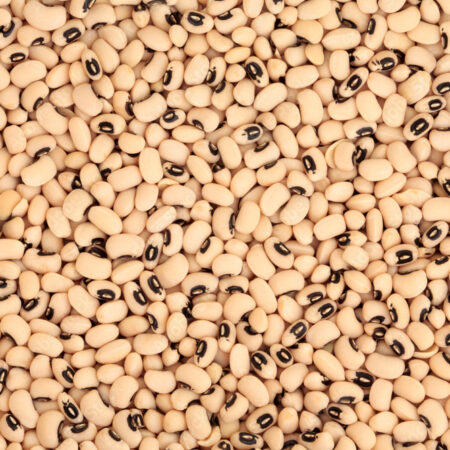
Black Eye bean
Black-eyed peas, also known as Black Eye beans, are a variety of cowpeas characterized by a distinct black spot on their hilum (the point where they were attached to the pod). Black-eyed peas are small, cream-coloured beans with a distinctive black or dark-coloured spot on one side. Black-eyed peas are a good source of plant-based protein, fibre, vitamins (such as folate and vitamin A), and minerals (including iron and potassium).
-
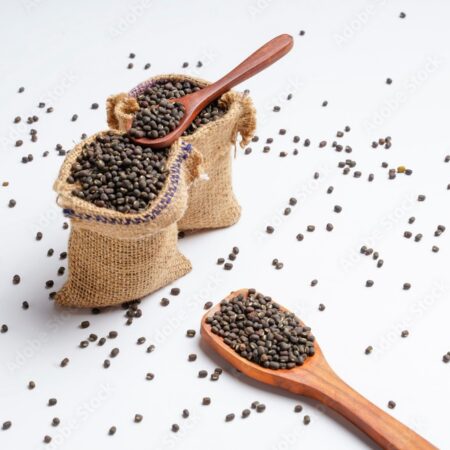
Black Matpe
Black Matpe, also known as Urad Dal or Black Gram, is a type of lentil or pulse widely used in Indian cuisine. Black Matpe is small, black, and oval-shaped, with a white interior. It is a staple in Indian cooking and is used to make various dishes, including dal (lentil curry), idli, dosa, and vada. Urad dal is often ground into flour and used in the preparation of batters for fermented dishes. Black Matpe is a good source of protein, dietary fibre, iron, magnesium, potassium, and B vitamins. It provides essential nutrients for a balanced diet.
-
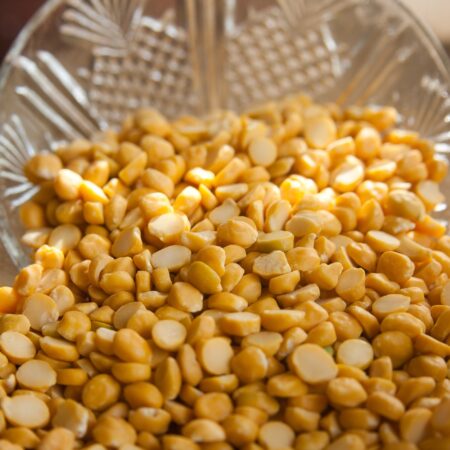
Chana
“Chana” refers to chickpeas, which are legumes belonging to the Fabaceae family. Chickpeas are widely cultivated and consumed around the world as a nutrient-dense food, rich in protein, dietary fibre, vitamins (such as B vitamins), and minerals (including iron, magnesium, and zinc). It is a valuable plant-based protein source. Chickpeas are a versatile ingredient used in a variety of dishes. They are a key component in popular recipes like hummus, chana masala, falafel, and salads.
-
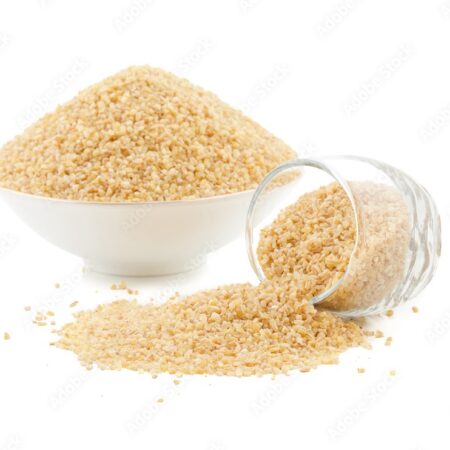
Daliya
Daliya, also known as cracked wheat or bulgur, is a type of wheat product that is made by milling whole wheat grains coarsely. Daliya is made by breaking or crushing whole wheat into smaller pieces, creating a coarse texture. It has a granular and slightly chewy texture after cooking. The size of the granules can vary, and there are different grades of Daliya available. Daliya is a versatile ingredient used in various savoury and sweet dishes. It is often used as a base for porridge, upma, pilaf, and desserts.
-
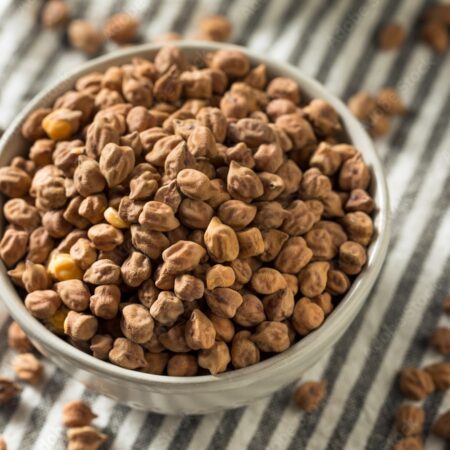
Desi Chick Peas
Desi Chickpeas, also known as Bengal Gram or Kala Chana, is a variety of chickpeas that differ from the Kabuli chickpea variety. Desi Chickpeas are smaller, darker, and have a rougher coat compared to Kabuli chickpeas, which are larger, lighter in colour, and have a smoother coat.They are usually dark brown, black, or tan in colour, with variations depending on the specific type Chickpeas have a nuttier and earthier flavour compared to Kabuli chickpeas.
-
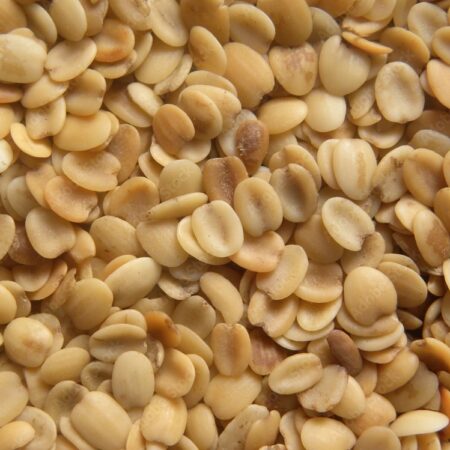
Dhana Dal
Dhania ka chawal or Dhana Dal is the core of the coriander seed. Once the outer shell is removed from the coriander seed it reveals a soft, fleshy inner core that is removed and used in making mukhwas or other recipes. Dhana dal is a very healthy ingredient & has a slight citrus & earthy flavour.
-
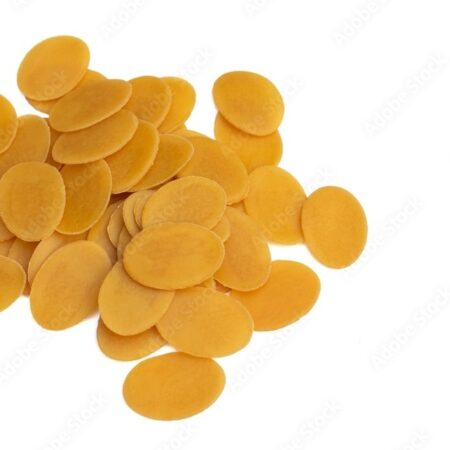
Frying Panipuri
Panipuri, also known as golgappa or puchka, is a popular street food in India, and frying panipuri refers to a specific preparation method. Frying panipuri involves deep-frying the small, round puris until they puff up and become crispy. The frying process adds a delightful crunch to the puris, creating a contrast with the soft fillings.
-
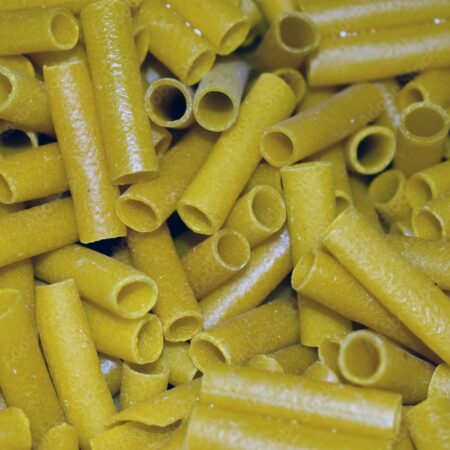
Frymes Nalli
These are small colored flakes that come in circular and star shapes, made of rice, tapioca, potato flour they taste best when fried in oil and sprinkled with tangy chat masala or amchur They make a delicious tea-time snack when fried and served.
-
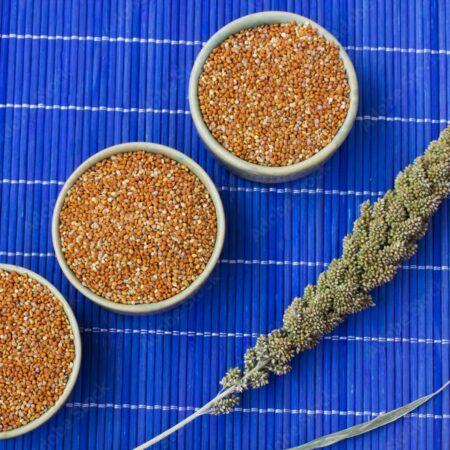
Green Millet
Green Millet, also known as Bajra, is a small-seeded grass that belongs to the Poaceae family. Green Millet is a drought-resistant cereal crop that is grown in various regions around the world. It is particularly well-suited for arid and semi-arid climates. The seeds of Green Millet are small, and round, and can vary in colour from light green to yellowish-brown. Green Millet is a good source of complex carbohydrates, dietary fibre, and essential nutrients such as iron, magnesium, and B vitamins. Green Millet is naturally gluten-free, making it suitable for individuals with gluten sensitivities or those following a gluten-free diet.
-
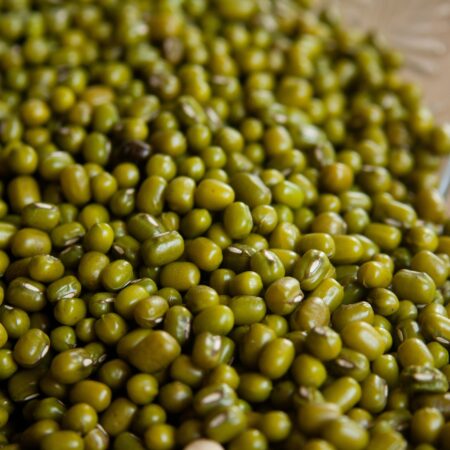
Green Moong bean
Green Moong Beans, also known as mung beans or green gram, are small, green, cylindrical-shaped legumes that belong to the legume family. Green Moong Beans are a rich source of plant-based protein, dietary fibre, vitamins (especially B vitamins), and minerals (including iron, magnesium, and potassium). These beans are versatile and used in various culinary applications. They are often sprouted and used in salads, stir-fries, curries, and soups. In some cuisines, they are ground into a paste to make batter for dosas and crepes.
-
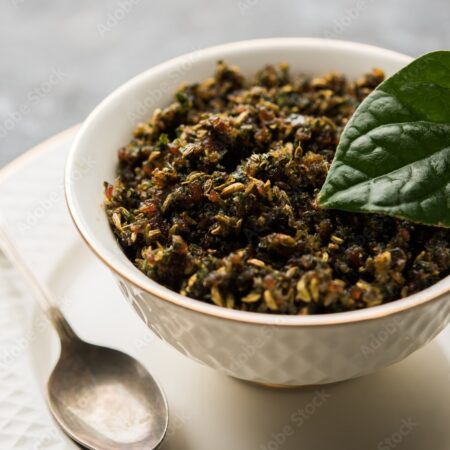
Gulkand
Gulkand is a sweet preserve made from rose petals and sugar. Gulkand is primarily made by layering fresh rose petals with sugar in a glass jar. Over time, the natural moisture in the petals combines with the sugar, creating a sweet and fragrant preserve. The preserve is typically made using the petals of fragrant and edible rose varieties, such as Damask roses or desi roses, known for their pleasant aroma. Gulkand has a unique flavour that combines the sweetness of sugar with the floral essence of rose petals. It has a rich and aromatic taste.
-

Idli Rawa
Idli Rawa, also known as Idli Rava or Rice Rava, is a coarsely ground form of rice that is a key ingredient in making idlis, a popular South Indian steamed rice cake. Idli Rawa is made of coarsely grinding parboiled rice. It has a granular texture, finer than traditional rice but coarser than rice flour. It is a primary ingredient in the preparation of idlis, a traditional South Indian breakfast item. Idlis made from Idli Rawa are known for their soft and spongy texture.
-
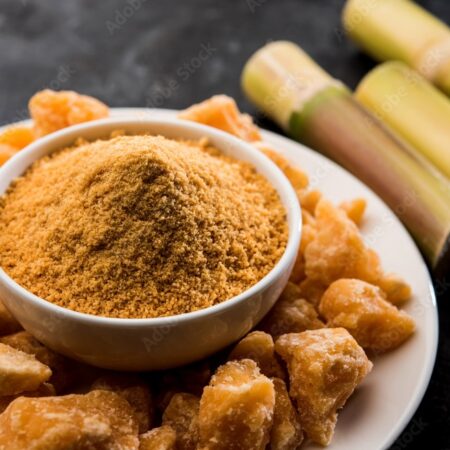
Jaggerry
Jaggery, also known as “gur” in Hindi, is a traditional non-centrifugal cane sugar consumed in some countries in Asia and the Americas. Jaggery is made by concentrating sugarcane juice or sap from palm trees. The juice is boiled to produce a thick, concentrated syrup, which is then solidified and moulded into blocks or cakes. The primary ingredient in jaggery is either sugarcane juice or sap from date palms, coconut palms, or other palm trees. The natural concentration of sugars gives jaggery its sweet taste.
-
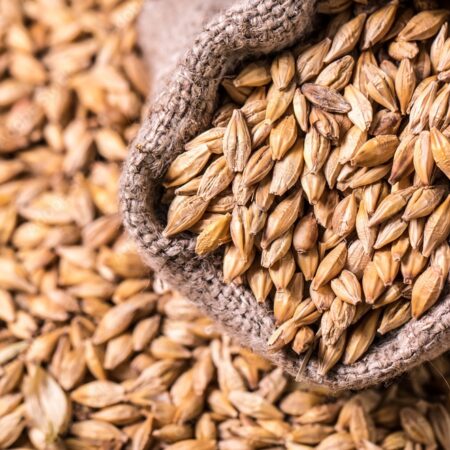
JAV
This is a non-wheat flour made from grinding whole barley. It is a popular alternative to wheat flour. Barley is primarily a cereal grain popularly known as jau in India. It is the fourth most important cereal crop after rice, wheat and maize. It’s converted into malt to use for various food preparations.
-
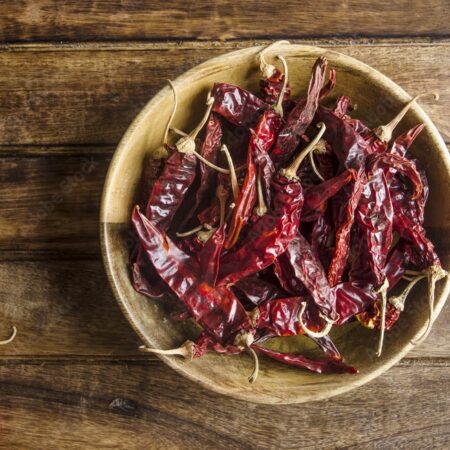
Kashmiri chilli
Kashmiri chilli, also known as Kashmiri red chilli or Degi Mirch, is a variety of chilli pepper that originates from the Kashmir region of India. Kashmiri chillies are long, slender, and have a wrinkled appearance. They are known for their vibrant deep red color. These chillies are prized for their mild to moderate heat and unique flavour that combines a subtle spiciness with a hint of sweetness and a distinctive aroma.
-
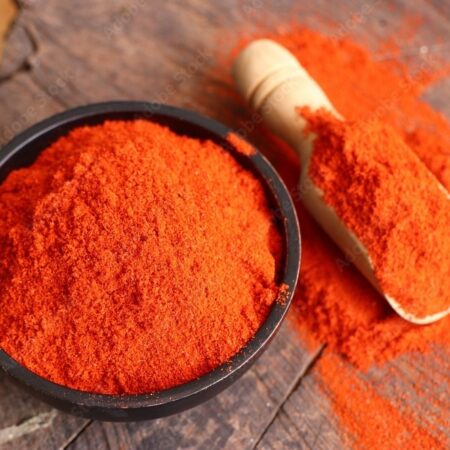
Kashmiri Chilli Powder
Kashmiri Chilli Powder is a spice derived from the dried, mild to moderately spicy Kashmiri chillies. Kashmiri Chilli Powder comes from the Kashmir region of India, where a specific variety of red chillies is cultivated for its unique flavour, vibrant colour, and moderate heat. It is known for its deep red colour, imparting a rich hue to dishes. The chillies used for making this powder are often long, slender, and have a wrinkled appearance.

